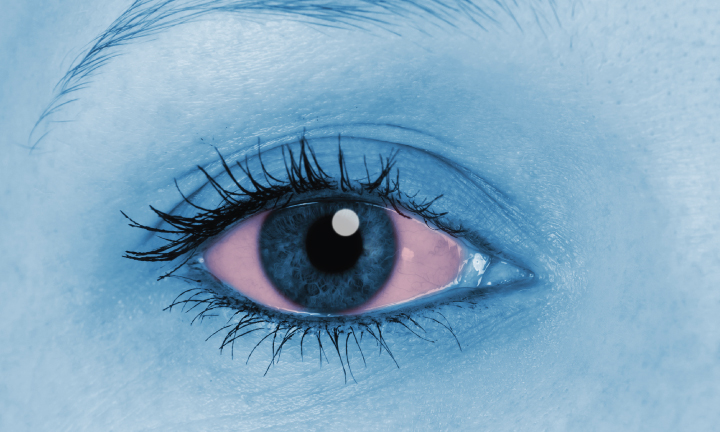Entering your 60s marks a time of wisdom, experience, and often, reflection. Your 60s are also a critical juncture for your eye health. As we age, our eyes undergo changes, making it essential to prioritize eye care to maintain your best possible vision and overall well-being. In this guide, we'll explore common eye conditions, warning signs of severe vision issues, behaviors impacting eye health, the significance of early detection, and how to ensure regular preventive care by choosing a vision insurance plan that works for you.
Top Eye Conditions to Keep in Mind
Presbyopia: A natural aging process, presbyopia affects the eye’s ability to focus on close objects due to hardening of the lens inside the eye. It often becomes noticeable in your early to mid-40s but progresses into your 60s. For most, presbyopia requires the use of reading glasses or bifocals if you already use corrective lenses. It is a natural aging condition, but it can be frustrating!
Macular Degeneration: This condition causes the gradual deterioration of the macula, which is the central part of the retina responsible for sharp vision. Age-related macular degeneration (AMD) impacts your central vision and is a leading cause of vision loss in older adults. Fortunately, macular degeneration detection is possible — keep reading to learn more about its early detection.
Cataracts: A cataract results from clouding of the eye’s natural lens, leading to blurry vision, faded colors, and difficulty seeing at night. While cataracts can develop at any age, it is common to have some clouding of the lenses in ones’ 60s and can be effectively treated with surgery.
Glaucoma: Glaucoma encompasses a group of eye conditions characterized by damage to the optic nerve, often due to increased intraocular pressure which can lead to peripheral vision loss and, in some cases, blindness. Glaucoma is the second leading cause of blindness worldwide. Keep reading for available options on prevention and treatment.
Top Warning Signs of Severe Eye Conditions
Noticing these signs and symptoms can help you recognize vision problems so that they can be examined and treated by an eye doctor. Consult with your vision health professional or schedule an eye exam if you experience these changes in your vision.
Loss of Side Vision: Peripheral vision loss may indicate conditions like glaucoma or retinal detachment. This kind of vision loss is often unnoticed until advanced stages. If you notice peripheral vision loss, it’s time for a vision appointment.
Changing Vision: Any sudden — or even gradual yet noticeable — changes in vision, such as blurriness, distortion, or difficulty seeing in low light, are cause for immediate attention.
Floaters or Flashes: The sudden onset of floaters or flashes could signal a retinal tear or detachment, requiring urgent medical evaluation.
Distorted Vision: Seeing wavy or distorted lines, particularly in the central vision, might indicate macular degeneration and necessitates prompt assessment from a vision professional. Don’t delay your vision appointment with this kind of vision change.
Top Behaviors Affecting Eye Health
Good news! There are ways that you can adjust your lifestyle to better protect your eyes and your vision health. Here are a few things that affect your eye health for you to keep in mind.
Sugar Consumption: High blood sugar or poorly managed diabetes is the cause of diabetic retinopathy, a condition damaging blood vessels in the retina. If you have blood sugar issues or diabetes, work with your healthcare provider to manage your condition.
Smoking: Smoking increases the risk of developing cataracts, macular degeneration, and optic nerve damage, accelerating age-related vision decline. Quitting smoking is an excellent investment in your overall health.
UV Light: Prolonged exposure to ultraviolet (UV) light from the sun can harm the eyes and contribute to the development of cataracts and AMD. Use sunglasses outdoors to limit your exposure to harmful UV light.
Diet and Exercise: A balanced diet rich in antioxidants, vitamins, and omega-3 fatty acids supports eye health. Regular exercise also promotes proper blood circulation, benefiting overall eye function.
Importance of Early Detection of Eye Conditions
Early detection of eye conditions is paramount for preserving vision and preventing irreversible vision damage. Routine comprehensive eye exams — including screenings for glaucoma, macular degeneration, and cataracts — enable timely diagnosis and treatment initiation. By identifying vision and eye issues in their early stages, interventions can be implemented to manage or slow progression effectively.
Having vision insurance can make regular eye exams simple and cost-effective. When you choose your vision plan, make sure that they offer a large network of providers in your area, and compare the benefits you’ll have access to. These may include discounted glasses or contacts, low-cost eye exams, and more. VSP® Individual Vision Plans make it simple to find an eye doctor near you.
Conclusion
Whether you have just entered your 60s or you are past that time, prioritizing eye health is so important to maintaining an active and fulfilling lifestyle. By staying informed about common eye conditions, recognizing warning signs, adopting healthy behaviors, and scheduling regular eye exams, you can safeguard your vision and enjoy a clear outlook on the world for years to come. Remember, choosing a vision insurance plan that helps you stay on top of your proactive care today — potentially saving you money on vision insurance coverage — ensures a brighter tomorrow for your eyesight.
Disclaimer: Information received through VSP Individual Vision Plans’ social media channels is for informational purposes only and does not constitute medical advice, medical recommendations, diagnosis, or treatment. Always seek the advice of your physician or other qualified health provider with any questions you may have regarding a medical condition.
Reviewed by Dr. Valerie Sheety-Pilon:
Dr. Valerie Sheety-Pilon is Vice President of Clinical and Medical Affairs at VSP Vison Care where she helps drive strategic initiatives aimed at raising awareness about vision, eye health and its connection to overall wellness, while providing insight into medical advancements that seek to benefit patient care. She also provides oversight of VSP programs to address gaps in care for some of the most high-risk populations, including those living with diabetes.
With more than two decades of experience as a Doctor of Optometry, Dr. Sheety-Pilon has dedicated much of her time to clinical research across numerous ophthalmic subspecialties and has an established history of helping patients through novel therapeutic agents and clinical adoption of transformative technology in the areas of digital health, pharmaceuticals, and medical devices.
Prior to joining VSP Vision in 2019, Dr. Sheety-Pilon served as Adjunct Clinical Professor at Illinois College of Optometry, held various executive positions within the eye health industry, and has extensive experience managing and practicing within an ophthalmology and optometry practice.
Your vision. Your way.
Not covered for vision? Get an individual plan, customized for you – including where you want to use it: at the doctor, in a retail location, or even online.

Eye Health: The Top 10 Common Causes of Red Eye
Red eye is a common eye problem that you’ve probably experienced on more than one occasion. But what is red eye and what causes it? The commo...

The Best Places to Buy Eyeglasses
So, do you need prescription eyeglasses? Probably not surprising, but you have options. Lots of options. Do you buy them through your eye doctor, a ...

Is Getting VSP Vision Insurance Worth It?
Your eyes are one of your greatest assets; they are your way to access the many sights of the world. This is why caring for your eyes is so importan...

